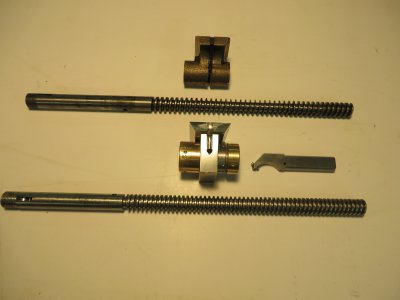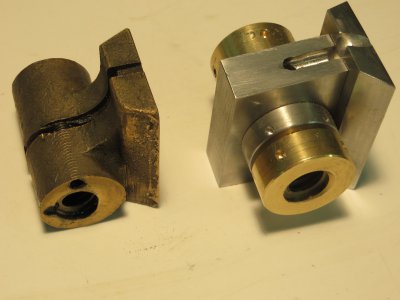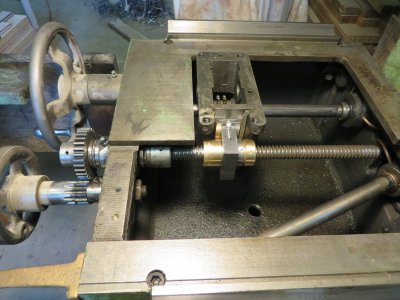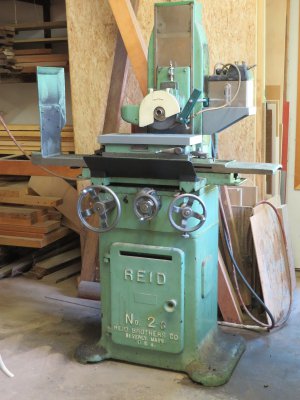I found this Reid Brothers surface grinder at a high school machine shop auction. It seemed in good shape except for a preposterous amount of play in the cross feed. When I tore it down to clean it, I found a lead screw that had truly given its all for the cause along with an odd bronze feed nut.
Turning a new screw was quite straightforward: a 3/4 x 5tpi left hand acme about 12" long with a fine threaded end and a wood ruff keyway. The old screw was 4tpi, but I used standard 5tpi bronze nuts.
The nut was harder. Taking matters from the ridiculous to the sublime, I decided this needed double nuts for added bearing area with a fine threaded adjustment between them to minimize the backlash. Also,a lubrication hole delivers oil to the center of the split nut. With all that going on is such a small space, I drew it in some detail.
You guys with milling machines will laugh, but I rough cut the 2 steel blocks for the nut from cold rolled bar stock with a hand hack saw and then reassembled the grinder to finish grind them before bolting them together. The last job for the old screw and nut was making their replacement.
Lots of fine threading on the steel "T" mount, the bronze acme nuts, and a lock nut along with a little spanner wrench to assemble it all completed the job.
The nut slid right into its dovetailed housing. The screw turned snugly from end to end. We're back in business.




Turning a new screw was quite straightforward: a 3/4 x 5tpi left hand acme about 12" long with a fine threaded end and a wood ruff keyway. The old screw was 4tpi, but I used standard 5tpi bronze nuts.
The nut was harder. Taking matters from the ridiculous to the sublime, I decided this needed double nuts for added bearing area with a fine threaded adjustment between them to minimize the backlash. Also,a lubrication hole delivers oil to the center of the split nut. With all that going on is such a small space, I drew it in some detail.
You guys with milling machines will laugh, but I rough cut the 2 steel blocks for the nut from cold rolled bar stock with a hand hack saw and then reassembled the grinder to finish grind them before bolting them together. The last job for the old screw and nut was making their replacement.
Lots of fine threading on the steel "T" mount, the bronze acme nuts, and a lock nut along with a little spanner wrench to assemble it all completed the job.
The nut slid right into its dovetailed housing. The screw turned snugly from end to end. We're back in business.




